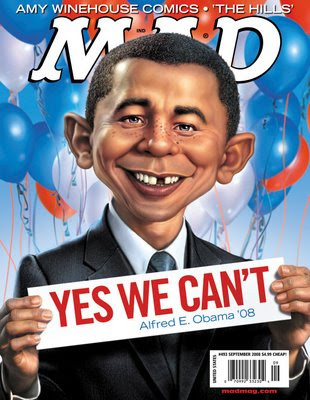With this kind of track record?
Medicare (hospital insurance). In 1965, as Congress considered legislation to establish a national Medicare program, the House Ways and Means Committee estimated that the hospital insurance portion of the program, Part A, would cost about $9 billion annually by 1990.v Actual Part A spending in 1990 was $67 billion. The actuary who provided the original cost estimates acknowledged in 1994 that, even after conservatively discounting for the unexpectedly high inflation rates of the early 70s and other factors, the actual [Part A] experience was 165% higher than the estimate.
Medicare (entire program). In 1967, the House Ways and Means Committee predicted that the new Medicare program, launched the previous year, would cost about $12 billion in 1990. Actual Medicare spending in 1990 was $110 billionoff by nearly a factor of 10.
Medicaid DSH program. In 1987, Congress estimated that Medicaids disproportionate share hospital (DSH) paymentswhich states use to provide relief to hospitals that serve especially large numbers of Medicaid and uninsured patientswould cost less than $1 billion in 1992. The actual cost that year was a staggering $17 billion. Among other things, federal lawmakers had failed to detect loopholes in the legislation that enabled states to draw significantly more money from the federal treasury than they would otherwise have been entitled to claim under the programs traditional 50-50 funding scheme.
Medicare home care benefit. When Congress debated changes to Medicares home care benefit in 1988, the projected 1993 cost of the benefit was $4 billion. The actual 1993 cost was more than twice that amount, $10 billion.
Medicare catastrophic coverage benefit. In 1988, Congress added a catastrophic coverage benefit to Medicare, to take effect in 1990. In July 1989, the Congressional Budget Office (CBO) doubled its cost estimate for the program, for the four-year period 1990-1993, from $5.7 billion to $11.8 billion. CBO explained that it had received newer data showing it had significantly under-estimated prescription drug cost growth, and it warned Congress that even this revised estimate might be too low. This was a principal reason Congress repealed the program before it could take effect.
SCHIP. In 1997, Congress established the State Childrens Health Insurance Program as a capped grant program to states, and appropriated $40 billion to be doled out to states over 10 years at a rate of roughly $5 billion per year, once implemented. In each year, some states exceeded their allotments, requiring shifts of funds from other states that had not done so. By 2006, unspent reserves from prior years were nearly exhausted. To avert mass disenrollments, Congress decided to appropriate an additional $283 million in FY 2006 and an additional $650 million in FY 2007.
http://jec.senate.gov/republicans/p...orm_Cost_Estimates_Reliable__July_31_2009.pdf
What could possibly go wrong?
Medicare (hospital insurance). In 1965, as Congress considered legislation to establish a national Medicare program, the House Ways and Means Committee estimated that the hospital insurance portion of the program, Part A, would cost about $9 billion annually by 1990.v Actual Part A spending in 1990 was $67 billion. The actuary who provided the original cost estimates acknowledged in 1994 that, even after conservatively discounting for the unexpectedly high inflation rates of the early 70s and other factors, the actual [Part A] experience was 165% higher than the estimate.
Medicare (entire program). In 1967, the House Ways and Means Committee predicted that the new Medicare program, launched the previous year, would cost about $12 billion in 1990. Actual Medicare spending in 1990 was $110 billionoff by nearly a factor of 10.
Medicaid DSH program. In 1987, Congress estimated that Medicaids disproportionate share hospital (DSH) paymentswhich states use to provide relief to hospitals that serve especially large numbers of Medicaid and uninsured patientswould cost less than $1 billion in 1992. The actual cost that year was a staggering $17 billion. Among other things, federal lawmakers had failed to detect loopholes in the legislation that enabled states to draw significantly more money from the federal treasury than they would otherwise have been entitled to claim under the programs traditional 50-50 funding scheme.
Medicare home care benefit. When Congress debated changes to Medicares home care benefit in 1988, the projected 1993 cost of the benefit was $4 billion. The actual 1993 cost was more than twice that amount, $10 billion.
Medicare catastrophic coverage benefit. In 1988, Congress added a catastrophic coverage benefit to Medicare, to take effect in 1990. In July 1989, the Congressional Budget Office (CBO) doubled its cost estimate for the program, for the four-year period 1990-1993, from $5.7 billion to $11.8 billion. CBO explained that it had received newer data showing it had significantly under-estimated prescription drug cost growth, and it warned Congress that even this revised estimate might be too low. This was a principal reason Congress repealed the program before it could take effect.
SCHIP. In 1997, Congress established the State Childrens Health Insurance Program as a capped grant program to states, and appropriated $40 billion to be doled out to states over 10 years at a rate of roughly $5 billion per year, once implemented. In each year, some states exceeded their allotments, requiring shifts of funds from other states that had not done so. By 2006, unspent reserves from prior years were nearly exhausted. To avert mass disenrollments, Congress decided to appropriate an additional $283 million in FY 2006 and an additional $650 million in FY 2007.
http://jec.senate.gov/republicans/p...orm_Cost_Estimates_Reliable__July_31_2009.pdf
What could possibly go wrong?



